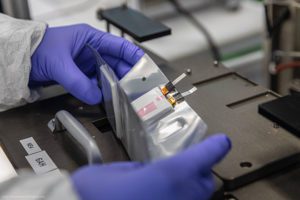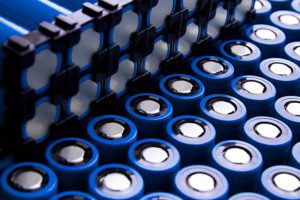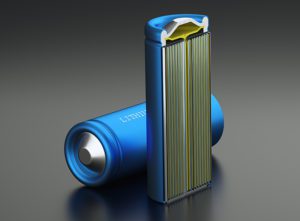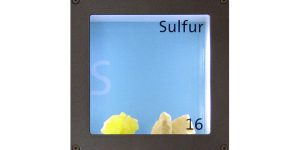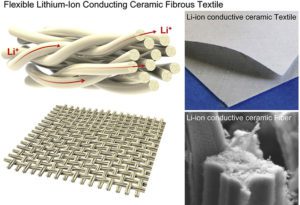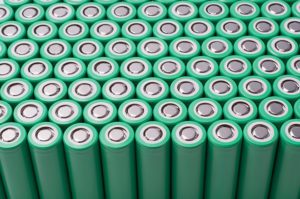Battery supplier SES has built a pilot production line capable of scaling up high-concentration, solvent-in-salt electrolyte production. The pilot line is capable of synthesizing SES’s proprietary solvent and manufacturing a high-concentration solvent-in-salt electrolyte formulation designed for SES’s hybrid Li-metal automotive batteries. The facility is currently capable of producing 5 tons of electrolyte per year, and… Read more »
Search Results Found For: "Li-Metal"
SK becomes third-largest shareholder of battery company SES
SK has invested an additional $35.9 million in SES (formerly SolidEnergy Systems), a developer of lithium-metal batteries. Coupled with its original $26.7 million investment in 2018, SK now becomes the third-largest shareholder of the battery company. SES, which launched in 2012 as an MIT research lab startup, is headquartered in Singapore, and operates labs and… Read more »
Researchers make Ceramic-based flexible electrolyte sheets for lithium metal batteries
Researchers at Tokyo Metropolitan University have developed a new method to make ceramic-based flexible electrolyte sheets for lithium metal batteries. They combined a garnet-type ceramic, a polymer binder, and an ionic liquid, producing a quasi-solid-state sheet electrolyte. The synthesis is carried out at room temperature, requiring significantly less energy than existing high-temperature (>1,000° C) processes…. Read more »
New report: Cost and performance of batteries improving much faster than forecast
A new report from the Rocky Mountain Institute (via Forbes) finds that improvements in the cost and performance of batteries are quickly outpacing forecasts, due to massive investments in battery manufacturing and steady advances in technology. According to RMI’s Breakthrough Batteries Report, venture capital firms invested over $1.4 billion in battery tech in the first… Read more »
Researchers achieve extended cycle life using molybdenum compound as protective anode layer in Li-S batteries
Researchers at The University of Texas at Dallas have used two-dimensional molybdenum disulfide (MoS2) as a protective layer for Li-metal anodes to greatly improve the performance of Li-S batteries. In “2D MoS2 as an efficient protective layer for lithium metal anodes in high-performance Li–S batteries,” published in Nature Nanotechnology , the researchers report that such a use of MoS2 results in… Read more »
Garnet ceramic electrolyte helps block dendrite formation
Researchers at the University of Maryland have developed a new template that they hope will enable a safer alternative to liquid electrolytes, which have several drawbacks, including flammability, leakage and dendrite formation in the electrodes. In “Lithium-ion conductive ceramic textile: A new architecture for flexible solid-state lithium metal batteries,” published in Materials Today, UMD researchers… Read more »
Increasing concentration of LiFSI salt suppresses dendrite formation
Lithium metal is considered an ideal anode material due to its exceptional charge and storage capability, but it has a tragic flaw: root-like growths called dendrites, which can lead to short-circuiting and spontaneous combustion. Now, researchers at the University of Maryland (UMD) have announced a breakthrough in their quest to solve the dendrite issue. In… Read more »
alpha-En wins grant to commercialize lithium metal anodes
New York-based alpha-En has won an award of $750,000 from the DOE’s Office of Technology Transition Technology Commercialization Fund. The funding will be used to commercialize Argonne National Laboratory’s proprietary highly conductive solid-state electrolyte coating for alpha-En’s lithium metal anodes. alpha-En says its lithium metal is purer than what is currently available on the market,… Read more »
DOE awards $6 million to first crop of Battery500 Seedlings
The Battery500 consortium, led by the DOE’s Pacific Northwest National Laboratory (PNNL), intends to build a battery pack with a specific energy of 500 Wh/kg, which would more than double the 170-200 Wh/kg per kilogram in today’s typical EV battery. Part of the initiative is the “Seedling” program, which identifies new and risky battery research… Read more »
DOE awarding $19 million to 22 advanced vehicle technologies projects
The DOE is awarding $19.4 million to 22 new cost-shared research projects in the fields of advanced batteries, lightweight materials, emission control, and energy-efficient mobility systems. Fifteen of these are Phase 1 Battery Seedling projects, aimed at battery materials and approaches that complement the Battery500 Consortium’s research. Promising Phase 1 awardees will be competitively weeded… Read more »




